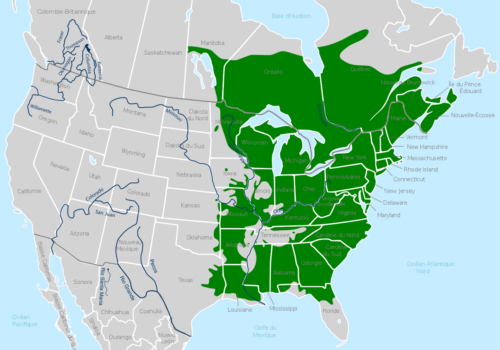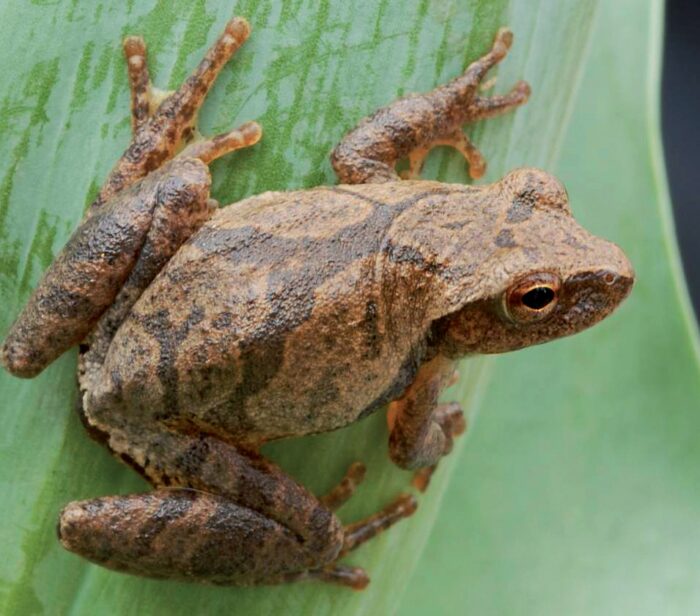What is a spring peeper?
Common name: spring peeper
Family: Hylidae
Genus: Pseudacris
Species: Pseudacris crucifer

Description
The spring peeper is a little frog with colors that vary from pink to tan, light brown or gray. Its most notable feature is the X-shaped mark on its back. It has a dark line that runs horizontally between its eyes and dark bars on its legs. Its belly is a plain cream color. If you live in southeastern Canada or the eastern United States, you might be very familiar with the spring peeper’s songs as the sun sets.
Distribution
They are found in eastern United States and southeastern Canada.

Habitat
The spring peeper is a forest frog. It lives near bodies of water like ponds, swamps, and streams where is good ground cover and thick under growth. Spring peeper abundance increases with increased forest cover.

Diet
These tiny frogs eat tiny insects and arthropods. They will eat anything that fits in their mouth. When they are in their tadpole stage, they graze on algae and decaying plant matter. The spring peeper is part of the diet of many creatures. The tadpoles are eaten by fish, salamanders, and dragonfly larvae. Adult spring peepers are eaten by mammals, fish, birds, giant water bugs, aquatic diving beetles, and snakes. This makes the spring peeper a crucial part in insect population control and act as an important part of the food chain for many creatures.

Behavior
Spring peepers will stay hidden throughout the day and will become active during dusk. However, they will become active during the day if it is cloudy and heavily raining. They are also active during the warm months of the year and will overwinter under leaves and logs, between bark, and in the soil. When winter approaches, their liver will produce glucose into the bloodstream to act as an antifreeze to help protect the frog when it freezes. They will vocalize when mating, fighting, after rain, and before hibernation.
Check out this amazing video by CatchingCreation
©2014 Stan Lake CatchingCreation.com
Mating
Spring peepers reach sexual maturity after one year of age. The males will make a chirping call in spring to attract a mate. This vocalization is how they get their name. Females are attracted to males with a faster and louder call. Older and larger males have faster and louder calls, which are considered more attractive by females. Some smaller males will position themselves near calling males to intercept females. These males are called satellite males.
Female spring peepers lay between 750 and 1300 eggs in small clusters under vegetation in a wetland. The tadpoles take 2-3 months to metamorphize into a frog and hop out of the water into the forest.

Author
-

David is a naturalist that loves ecology and bringing slices of nature indoors. He enjoys caring for houseplants, aquariums, and terrariums. David studied natural resource science and management at the University of Missouri Columbia. He has worked as a ranger at Chincoteague National Wildlife Refuge in Virginia and a biotech for the US Army Corps of Engineers in North Dakoda. He grew up on a farm in Missouri and learned how to value the outdoors.
View all posts

